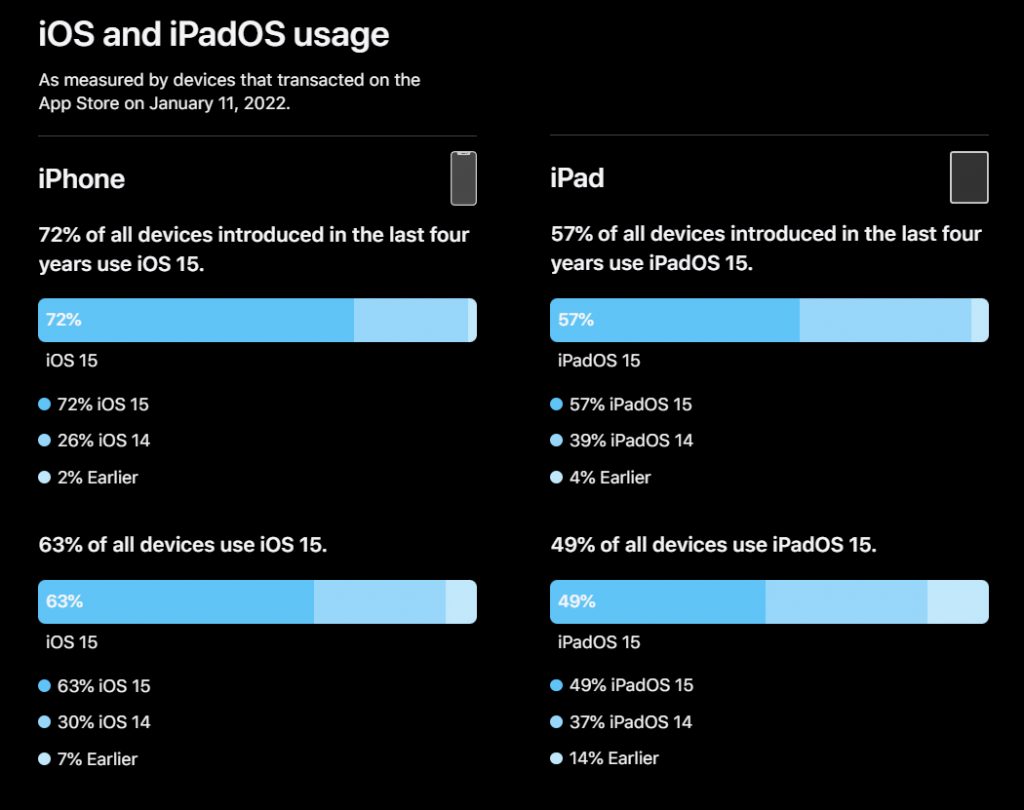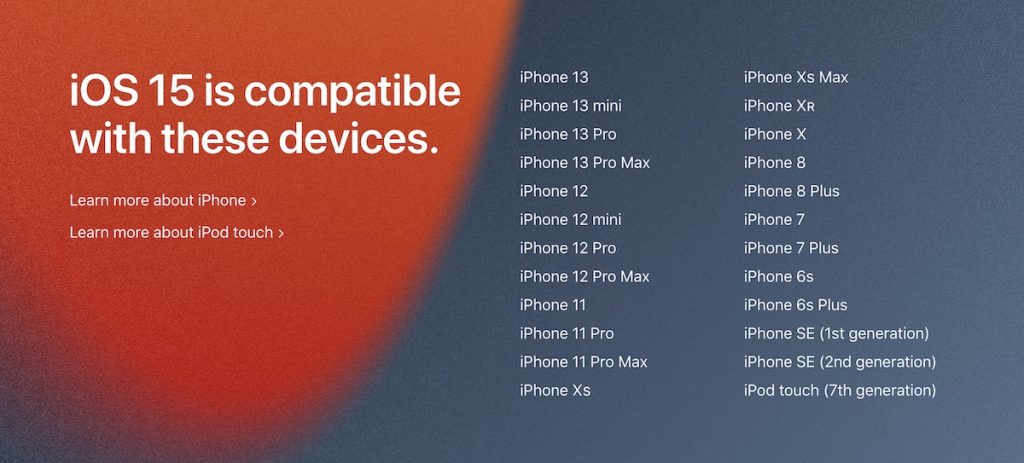Together with the iPhone 13 lineup, Apple had also launched their latest version of their operating system for its smartphones and tablets, iOS 15 and iPadOS 15. They offered a host of new features, like a notifications shade revamp, a focus mode as well as more information about the photos and videos you’ve taken in the Photos app. However, not everyone wanted to update to iOS 15 and iPadOS 15 of course, and so Apple allowed users to stay on iOS 14 and iPadOS 14 while still getting important security updates.

That decision appears to bitten back at Apple though, as more people than ever before are using older versions of iOS and iPadOS. For the first time since Apple launched iOS 15 and iPadOS 15, Cupertino has released data on the statistics surrounding iOS 15 and iPadOS 15 adoption rates. For all iPhones launched in the last four years (the iPhone XS, iPhone XR and iPhone XS Max and newer), only 72% of them are now on iOS 15. Meanwhile, that number drops to just 63% when accounting for all iPhones with 30% of all iPhone users preferring to stay on iOS 14, while another 7% are on iOS 13 and earlier.
That’s a large percentage of non-iOS 15 users, especially when you consider that Apple have made their latest operating system available on devices as old as the iPhone 6s, launched in 2015. In comparison, by December of 2020 iOS 14 had an adoption rate of 81% on iPhones in the last four years, with 72% of all iPhones switching to iOS 14. That number would rise to 90% for iPhones in the last four years and 85% of all iPhones by June of 2021.

The numbers aren’t much better when looking at iPads either. Apple’s statistics show that less than half of all Apple tablets use their latest tablet operating system despite being available for devices as old as 2014’s Apple iPad Air 2. The figures aren’t much better when taking into account only tablets from the last four years, with just a 57% adoption rate for iPadOS 15. These are terrible figures when you consider that iPadOS 14 had a 75% adoption rate for tablets from the last four years in December 2020, with 61% of all iPad users having swapped to iPadOS 14 back then.
Interestingly, Apple seems to be pushing users staying on iOS 14 towards switching to iOS 15. According to dhinakg on GitHub, when he tried to update to iOS 14.8.1, the option to update wasn’t available despite Apple’s earlier promises of being able to stay on iOS 14. Instead, he was greeted to just an option to update to iOS 15.2. As it turns out, the option to update to iOS 14.8.1 still existed, but needed him to go through a number of hoops. This included using an alternate profile on the iPhone to delay the OTA update so that the update server sends your device older details with the update information for iOS 14. You can check out his full post on the issue for more details on how to do so.
While you may prefer to stay on iOS 14 and iPadOS 14, there’s some fairly good reasons to update your device to the latest operating system. Not only will you get new features to toy around with, but it’ll also bring about better security and privacy protection features for your devices. If you’re planning to finally update your iPhone or iPad to iOS 15 and iPadOS 15, you can check out how to do so from our guide here.
[ SOURCE ]








